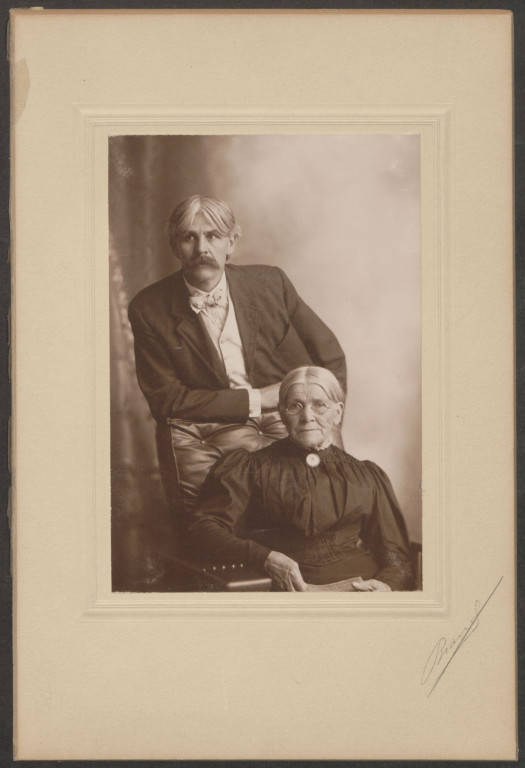Happy Women’s History Month. At the IDHH, we’d like to introduce Mary Salome Ott Brand –a childhood immigrant from France and an early settler of the North Shore of Chicago who cast her first ballot to vote at the age of 91.
In 1913, Illinois became the first state in the nation to grant women the right to the presidential vote. Women’s suffrage had slowly evolved since the 15th amendment in 1870 leading to the ratification of the 19th Amendment in 1920. The right to vote was won in large part by the organizing and lobbying of woman’s clubs in communities across the nation. The diversity of materials in Highland Park Public Library’s Highland Park History Collection shows different elements of women’s history, both at the collective and political while also in the lives of individuals. The collections include women’s club minutes, photographs, and biographies constructed of newspaper clippings and stories transcribed by local historians and family members.
On Election Day 1916, Mary Salome Ott Brand left her house on N. Second Street in Highland Park to vote for the first time. At 91, she was accompanied by her son Orson, who documented his mother’s first time to the polls.


Grandma Brand, Age 91. 1916. Highland Park Public Library. Highland Park History. Photograph by Orson Brand. Permission to display granted by Highland Park Public Library.
The fight for women to vote had been long fought. With Suffragette figures such as Susan B. Anthony well known, the struggle to vote was also fought by women in local communities through woman’s clubs and federations of woman’s clubs. Women in Lake County had been active in the conversation and activism of women’s right to vote. In 1916, The Woman’s Civic Club –later renamed the Ravina Women’s Club joined forces and merged with the Highland Park Woman’s club in in the 1960s –wrote they were “in favor of full suffrage for the women of Illinois as speedily as possible, therefore favor the adoption of an amendment to the constitution to that end” –meaning presidential suffrage –that would eventually become the 19th ammendment. Highland Park Public Library has several collections from Highland Park area womans’ clubs dating back to the early 20th century, including the Ravina Woman’s Club Records and Highland Park Woman’s Club Records.
Living in the North Shore during the civil war, the great migration, the fight for unions, and the fight for women’s vote, Brand’s life was certainly impacted by the changing political landscape and political awareness. The right to vote, at 91, was certainly reason enough to document.
Here is Brand at the polls.

In the obituaries that were included in Ms. Brand’s biographical file- along with stories she told a local historian, they universally describe Brand as a life-long resident of Lake County –which she was, after moving there. Photographs of her home continue to document what life in Lake County was like in the earliest part of the 20th century. For example, this picture taken by George D. Rice –another local documentarian I mentioned in a post in January.

Mary Salome Ott Brand and Children in Front of a House. n.d. Highland Park History. Photograph by George D. Rice. Permission to display granted by Highland Park Public Library.
Compared with her stories of the prairie as it was in the 1840s-60s, the rapid change from prairie to the north Chicago suburbs is immediately apparent. The Highland Park History Collection is definitely unique among the collections within the IDHH for having so many different forms of historical documentation. Meeting minutes, written local histories, and, of course, photographs build a well-rounded picture of subjects at the micro-local. The biographical files created by local historians in Highland Park and more broadly Lake County cover the lives of women during the early 20th century. Here is Mary Salome Ott Brand’s assembled biography.

Biography of Mary Salome Ott Brand. C.1925. Highland Park Public Library. Highland Park History. Permission to display granted by Highland Park Public Library.
Lastly, here’s a picture of her and her son together:

Orson Brand and His Mother, Mary Salome Ott Brand. 1916. Highland Park Public Library. Highland Park History. Photograph by Orson Brand. Permission to display granted by Highland Park Public Library.
For more of any of these kinds of documents please visit the IDHH. The papers of women’s social and political organizations are linked above, but here are more of the local biographies created by historians and more photographs by Orson Brand.
2 Replies to “Women’s History Month: Mary Salome Ott Brand”
Comments are closed.